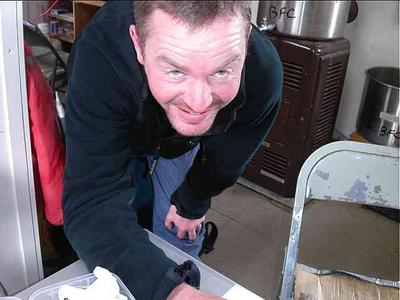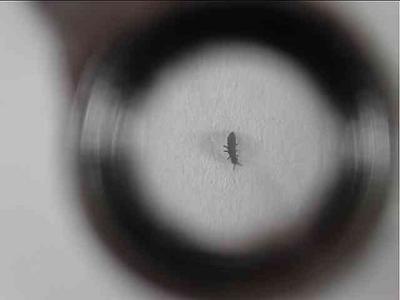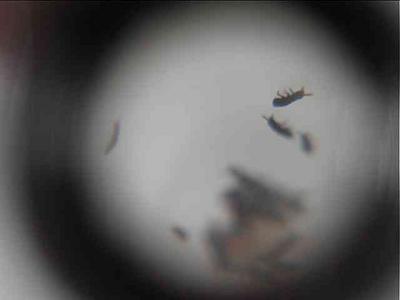19 January, 2003
Meet the Wingless Flies
I was alone in the F6 hut when I heard a knock on the door. It didn't
register at first, because there is NO one for miles around except my own
team, and they surely don't knock. I opened the door thinking maybe someone
was back early and knocking the dirt off their boots, and I found myself
looking into the faces of two smiling strangers! It took a few seconds for
me to close my mouth and recover enough to say, "Hello." They introduced
themselves as part of the Kiwi expedition camped near Canada Glacier. I
invited them in and fed them some chili I had just cooked up.
Roman Türk from Austria is a scientist studying lichens that live in high
altitudes. He often finds them on the mosses of the streams that we are
studying. Recently, he was near the South Pole for a few weeks looking for
lichens on the mountains there. He was very excited to say he had located
some; the first to do so.
Liam Nolan, a secondary school science teacher from New Zealand, is in
the Dry Valleys doing field work as part of a sabaticcal he is using to earn
his master's degree. He is collecting collombola, or springtails. They are
small insects he says he finds under rocks near the streams or in the wetted
zones. I had read about "wingless flies" and he says this is it! This is one
of the largest land inhabitants that lives in Antarctica all year long. I
expected them to be a quarter to one-half inch long, but they are only one
to two millimeters long. On a piece of white paper they looked like a speck
of pepper. With a hand lens I was able to count their six legs and see their
three body parts, (head, abdomen and thorax), and their two antennae.
Liam is looking at their DNA and trying to get an idea of the different
species that are living in the Dry Valleys, where they are located, and
about how many are here. He says that he often finds the collombola on rocks
with red spiders that are even smaller.
Both Liam and Roman go through the Dry Valleys looking for life, but to
find it they must get down close to the ground with a hand lens. The life
they are studying, like our algae and moss, are completely dependent on the
availability of water. Also, like the mosses and algae, the lichens and
collombola have adapted to the harshest environment on earth. The collombola
know when the weather is going to turn. They evacuate food they have eaten
from their bodies so it won't freeze inside of them. They produce an anti-
freeze protein and then go into a hibernative state until the weather
becomes favorable for life.
Robert Scott's assessment of there being no life in the Dry Valleys was
wrong, but it is easy to see why he thought so. He needed a hand lens and
the patience to crawl around on the ground, or to pick up rocks to look at
their undersides!

1. Liam is holding the hand lens while Karen tried to
photograph the moving springtails.

2. Liam trying to hold the hand lens for us to take a closer
look at the collombola.

3. Springtail through the hand lens. Can you see his body
parts?</

4. Another close-up of the little guys.

5. The springtails on the side are in focus, while the
ones on the bottom are just far enough to be out of focus. They were moving
quite a bit, so getting their picture was a challenge!
Contact the TEA in the field at
.
If you cannot connect through your browser, copy the
TEA's e-mail address in the "To:" line of
your favorite e-mail package.
|
